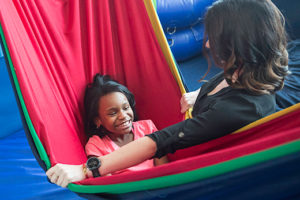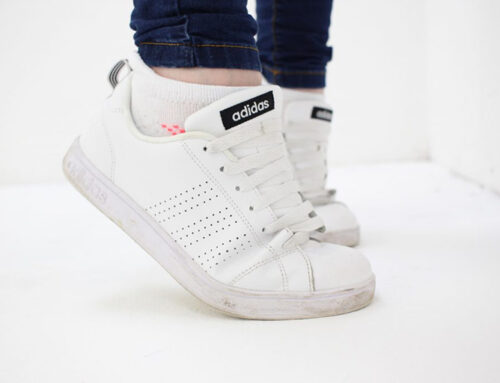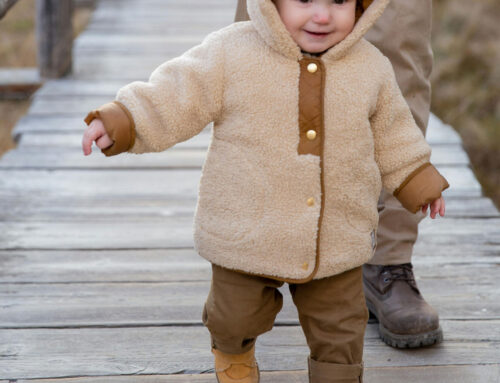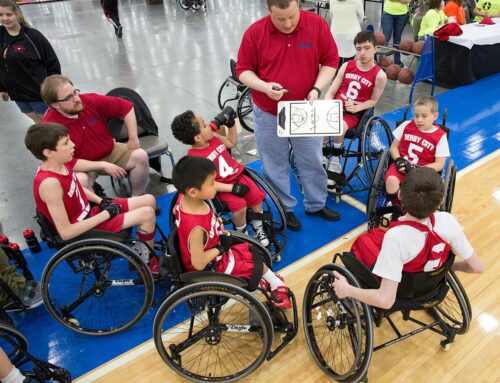Toe Walking

Toe walking is when a child walks on the toes or ball of the foot without the heel or other parts of the foot coming in contact with the floor. Toe Walking is defined as the failure of the heel to contact the floor at the onset of stance during the gait cycle, resulting in a bilateral toe-to-toe gait instead of the normal heel-to-toe pattern. Toe walking may be caused by neurological disorders such as Cerebral Palsy, muscular disorders such as Duchenne Muscular Dystrophy or contracture of the Achilles Tendon.
Idiopathic Toe Walking may be associated with developmental disorders such as Autism or children with sensory integration issues. The majority of children who present with Idiopathic Toe Walking had a normal birth weight, walked on time, began to toe walk immediately in their gait development, stood mostly in plantigrade (feet flat), were able to demonstrate heel-toe gait when instructed, and only toe walk intermittently. Idiopathic toe walking may be linked to hyper or hyposensitivity. Some children may not like the feeling of different surfaces on their bare feet, which cause them to rise up on their toes to avoid having the full surface of their feet contracting floor.
For children who are seeking more sensory input, toe walking increases the force of impact felt during ambulation, as the ground reaction force is distributed through a smaller surface area at the metatarsal heads. This sensory seeking toe walking pattern is common in children diagnosed with autism.
So what to do if your Child is Toe Walking?
Physical Therapy Evaluation and Treatment! Physical Therapists are movement specialists and know the importance of the musculoskeletal and neurological systems. From their intense studying to attain Doctorate degrees, physical therapists are extremely knowledgeable and can creatively facilitate a normal gait/ambulation pattern in children.
While you wait for your physical therapy evaluation, here are some treatment ideas for toe walking children:
- Stretching the Gastrocnemius muscle (Ankle dorsiflexion/plantarflexion): With the child lying on back or seated, hold child’s foot in hand. Apply light pressure, flexing foot up towards child’s head. Once you feel resistance, hold for 10-15 seconds, alternate feet and repeat stretch.
- Stretching Hamstring Muscle (Knee flexion/extension): With the child lying on their back or seated, with opposite knee bent or flat on floor, lift child’s leg with knee straight until you feel resistance. Hold for 10-15 seconds, and alternate legs.
- Standing supported/unsupported without shoes on the incline wedge: When a child stands on an inclined surface, they automatically get a stretch of their achilles tendon and go into dorsiflexion, which is the opposite of toe walking! Incline wedge is a great way to get a good stretch when a child can stand independently and you can play games like catch/throw while the child is on it! Preferred Tactile Incline wedge for children from a PT’s perspective is sold on amazon: here.If budget is tight, you can always be creative and use an old phone book or a stack of magazines to get the same stretch!
- Standing supported/unsupported without shoes on the wobble board: You may need to use two set of hands for this for safety reasons! Have the child stand on the wobble board with one person by their side for balance and safety and another person 2-3 feet in front of them. You can play ball toss again while standing on the wobble board! This is a great way for a child to get stronger with their deep foot intrisic muscles, stretch and gain dynamic balance! Amazon Link for a Wooden Wobble Board: here.If money is tight again, you can always buy two swimming pool noodles from the dollar store/Walmart and use foam board ($2-5) to make your home made wobble board! Simply put the noodles down on the floor and place the foam board in the center of the two noodles!
- Crab Walks: Start in bridge position, keeping bottom off the floor, moving forward or backward using hands and feet to propel!
- Penguin Walks: Walk with the heels on the ground and toes lifted up! You can have Penguin Walk races around the house to make it fun!
- Bean Bag toss: A great strengthening and stretching activity as it allows a child to flex their ankle upward for both strengthening of the leg as well as encouraging active range of motion of ankle dorsiflexion. If you do not have bean bags, you can always take mini ziploc bags and fill them with beans or rice! Mini-soft toys work great, too!
- Picking up Objects with Toes: Have the child sit on a chair where their feet come onto full contact with the floor. Place marbles or pom-poms (please note choking hazard if child is under 3 years of age) on either right of left side of the foot. Have the child pick up the marbles/pom poms by curling their toes and then place inside a bucket! This is a great way to strengthen those small yet very important foot intrinsic muscles! This is a great exercise for adults too – especially for those who have flat feet! If the child is under three years of age – you can buy a noodle from the dollar store and cut the noodle long ways into small circles for the child to pick up!
- Weight-bearing activities: Encourage barefoot standing using a variety of textures, promote squat to stand with fun activities to facilitate weight bearing. Physical therapists love the dyna discs especially for these activities! Make a fun balance obstacle course or even have the child play with a puzzle when doing these! Amazon has these amazing tactile stepping stones that help encourage proper weight bearing: here.Or you can always take an old pair of socks, buy some puffy paint from a craft store and put dots all over the bottom of the child’s socks. This will be a great way for the child to get proper weight bearing and sensory input through the tactile puffy paint!
Try one or all of these activities for your child that toe walks! Let us know if you have any comments, questions or concerns!
If you can not get your child to perform these activities, it may be best to consult a physical therapist for an Evaluation and Treatment! They can help with the problem and may even suggest bracing/orthotics, if needed!

Eyas Landing is a therapy clinic with a mission to provide evidence-based and family-centered therapy services for children, adolescents, and their families. The primary goal is to deliver relationship-based interventions within the most natural environments and to empower families to reach their full potential. To achieve this goal, our highly educated, compassionate staff dedicates time and expertise to create experiences that maximize therapeutic outcomes. The strength, determination, and perseverance of our clients are evident as they succeed in therapy, and ultimately in their daily lives.
Eyas Landing offers a wide range of comprehensive services including Speech Therapy, Occupational Therapy, Physical Therapy, ABA Therapy, Social Work, Family Therapy, and Neuropsych testing. Services are provided throughout the Chicagoland area via Telehealth, In-Home, and in our state of the art clinic.
Want to learn more or you have a specific question? Feel free to connect with us here!



